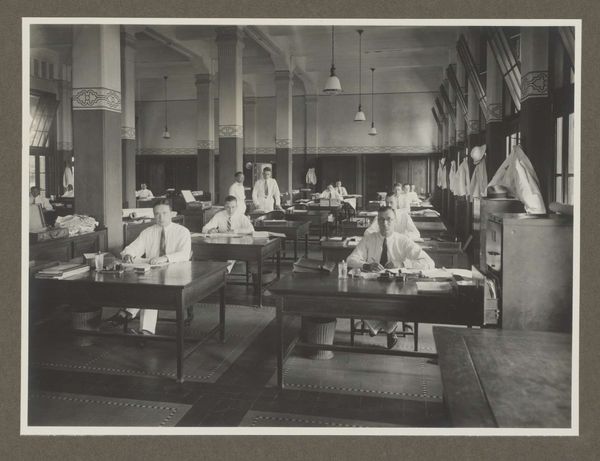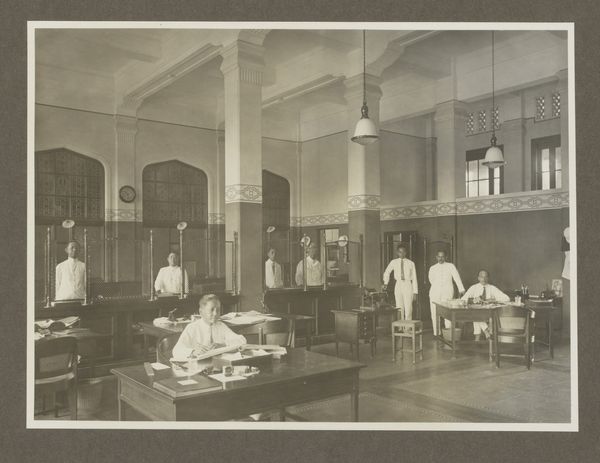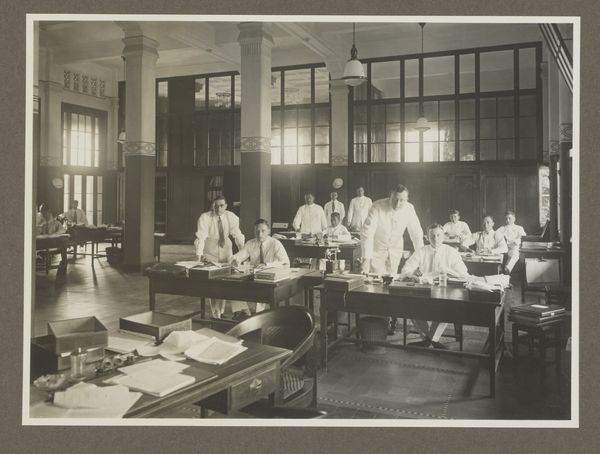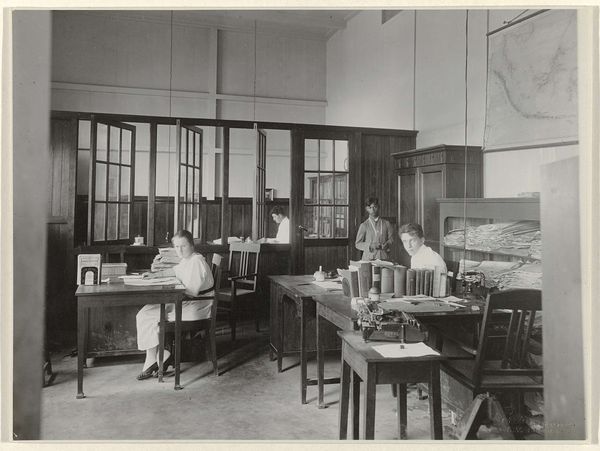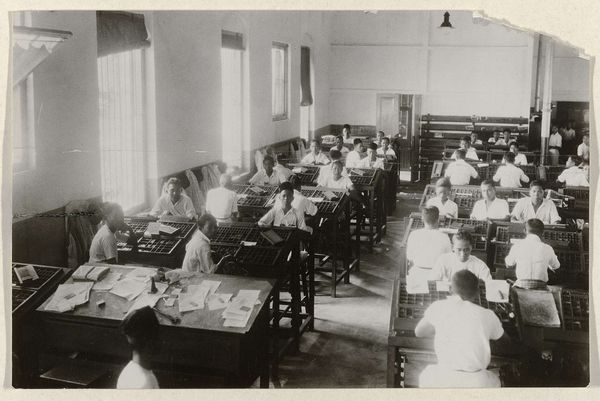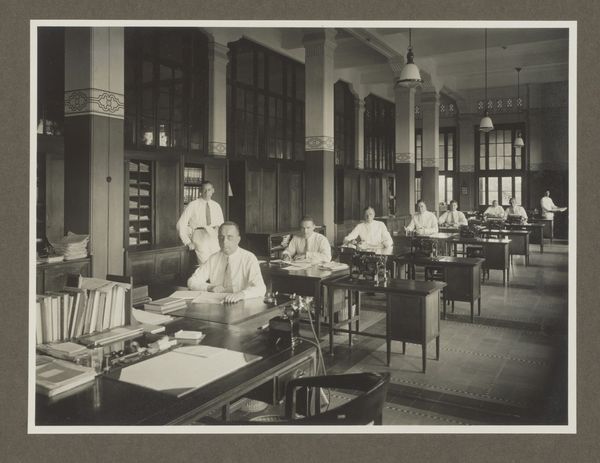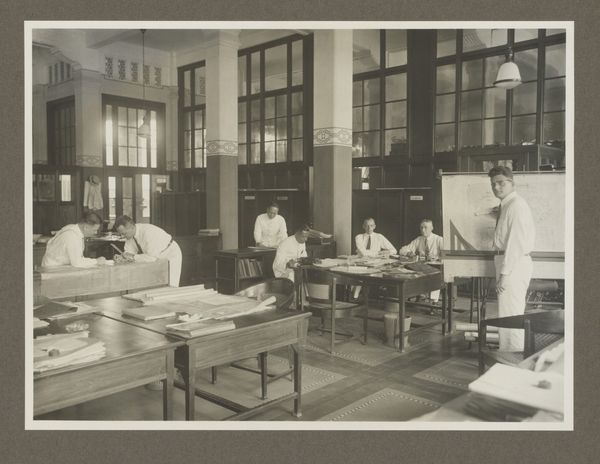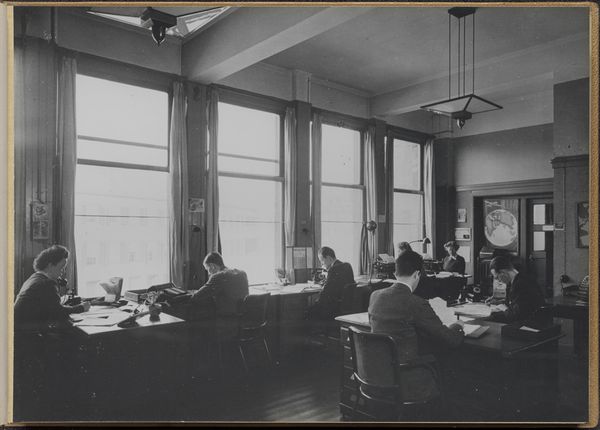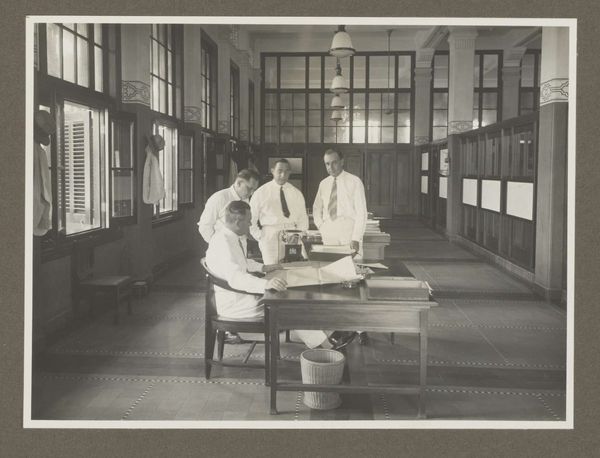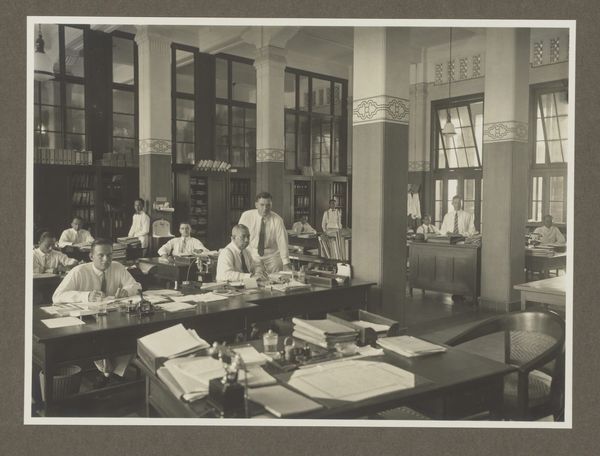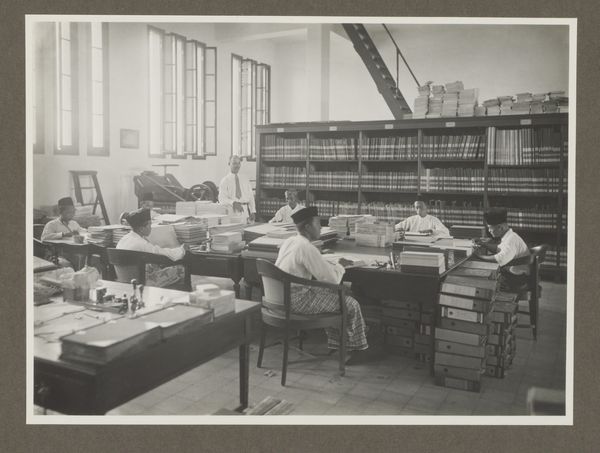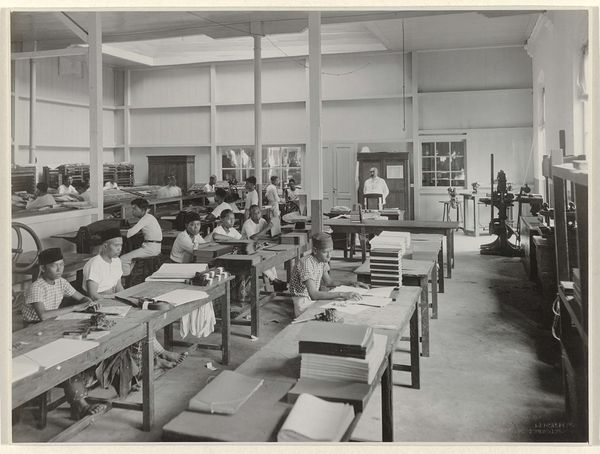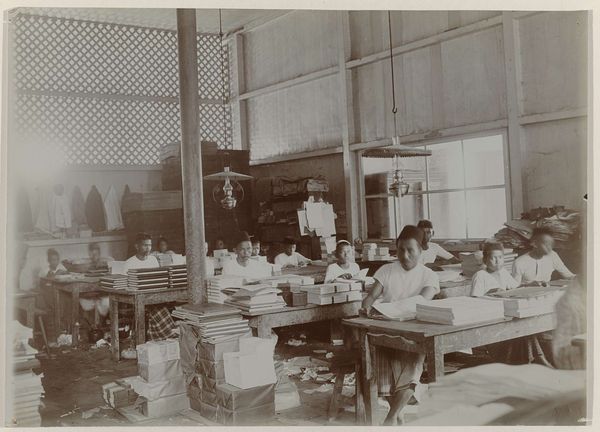
photography
#
portrait
#
photography
#
cityscape
#
modernism
#
realism
#
monochrome
Dimensions: height 170 mm, width 230 mm
Copyright: Rijks Museum: Open Domain
Editor: This photograph, "Teekenzaal," was created by Atelier Kurkdjian sometime between 1931 and 1934. I am struck by its quiet formality, and how the monochrome palette really focuses my attention on the people within this light-filled room. What do you see in this piece? Curator: The photograph indeed evokes a sense of order, but consider also the psychological weight of repetition. Each figure mirrors the other in pose and garment, creating a collective identity rather than celebrating individuality. Think about what it meant, historically, to represent a group in this way during this era. What anxieties or power dynamics might this seemingly simple scene be concealing? Editor: That's a fascinating perspective! The uniformity didn't immediately strike me as loaded, but the matching white attire and nearly identical poses do suggest a system of control or perhaps assimilation? Curator: Precisely. Look also at the traditional headwear amidst the colonial-era architecture. Doesn't it speak to the push and pull of cultural identity, the attempt to blend the traditional with the modern or perhaps the imposition of one over the other? Editor: I see it now – there's a silent conversation happening about cultural memory versus imposed structure. Thanks, I never would have looked this closely. Curator: Indeed, images, even seemingly simple ones, carry emotional and cultural resonance. Our understanding deepens as we become aware of the layers beneath the surface.
Comments
No comments
Be the first to comment and join the conversation on the ultimate creative platform.
